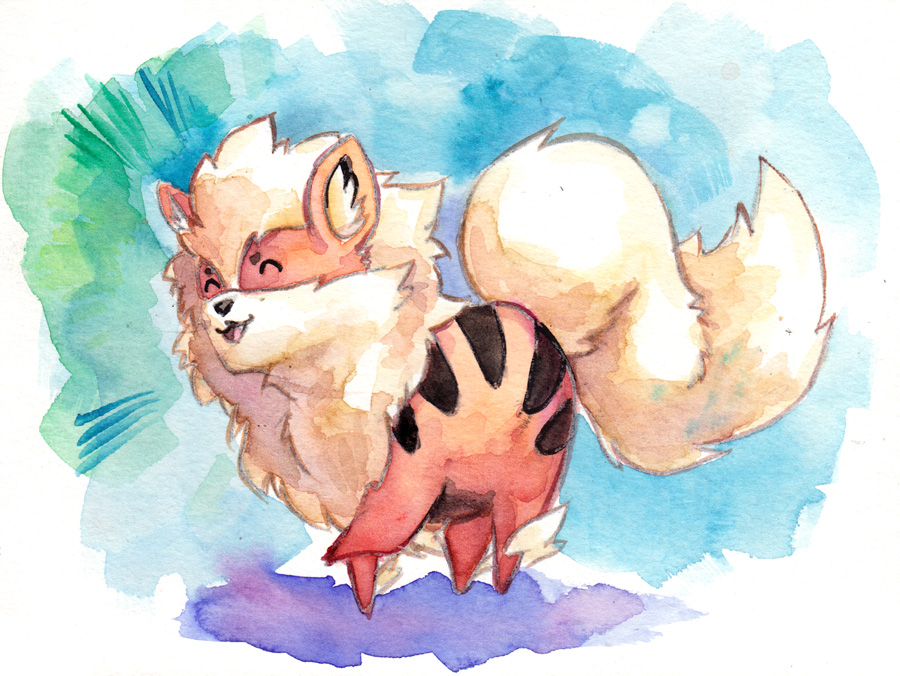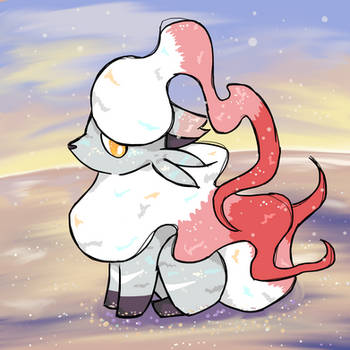ShopDreamUp AI ArtDreamUp
Deviation Actions
Description
The first of the materials posts! In this one, (pan and tube) watercolors! Brands used: Yarka, Windsor & Newton, Grumbacher, Holbein on Fluid watercolor paper (6x8”) The drawing was traced on with graphite paper, and this particular brand apparently had some wax in it so the watercolors didn’t go over it well.
These are the traditional watercolors one thinks of - either bought in a tube or a cake. I like to squirt from the tubes and let them dry out - watercolors can be reconstituted easily this way and easily thinned down.
Advantages:
Cost effective (a little goes a LONG way)
Bright colors (some brands/colors more than others)
Very blendable
Can be rewetted, reworked, and removed
Will not go over other medias, especially wax or plastic medias (colored pencils, acrylics, fixative)
Wide variety of colors and brands
Disadvantages:
Needs special paper
Needs special brushes (sable/artificial sable - something soft and springy)
Initial cost of tubes/cakes can be high (see Becca and my art supplies for under $100 for ideas on how to afford watercolors)
Have a tendency to destroy papers
Long drying times (especially if you use thin washes like I do)
Colors do not always scan/reproduce well
Colors come up with water, and sometimes getting dark tones can be hard.
Will not go over other medias, especially wax or plastic medias (colored pencils, acrylics, fixative)
Some colors are known to have carcinogenic chemicals in them (cadmium)
Its taken a lot of practice for me to get the hang of watercolors, and part of it is just experimentation and a lot of stubborn persistence. While they can be a forgiving medium, they are also not for impatient people - I’ve taken to having books or other projects when I watercolor, because you do have to leave them and let them dry. Also, many of watercolors advantages are also their disadvantages - while being able to rewet and rework watercolors is amazing, it can be prohibitive to getting good shading and dark tones as you can wind up noodling around with the same water-to-pigment mix if you don’t wait and let them dry (sometimes longer drying periods are needed, to truly let the pigments soak into the paper)
I also highly recommend using large brushes with watercolors - one of my initial mistakes was trying to use the tiniest of brushes available for everything, and it led to a lot of painful days of watercolors. Now I use a 1” flat, a #10 round, and a #2 round the most. A good round brush will allow you to achieve both fine details and broad strokes, with a good volume of paint in the brush so you can keep your color consistent. My flat brush is irreplaceable, being able to flip it and use either a broad stroke or the corners to get into tiny detail areas without having to change brushes or spend time fiddling around is fantastic.
My artbook will include a section of watercolor art and how to use them! The kickstarter has a little less than a week left, and is here:
[link]
These are the traditional watercolors one thinks of - either bought in a tube or a cake. I like to squirt from the tubes and let them dry out - watercolors can be reconstituted easily this way and easily thinned down.
Advantages:
Cost effective (a little goes a LONG way)
Bright colors (some brands/colors more than others)
Very blendable
Can be rewetted, reworked, and removed
Will not go over other medias, especially wax or plastic medias (colored pencils, acrylics, fixative)
Wide variety of colors and brands
Disadvantages:
Needs special paper
Needs special brushes (sable/artificial sable - something soft and springy)
Initial cost of tubes/cakes can be high (see Becca and my art supplies for under $100 for ideas on how to afford watercolors)
Have a tendency to destroy papers
Long drying times (especially if you use thin washes like I do)
Colors do not always scan/reproduce well
Colors come up with water, and sometimes getting dark tones can be hard.
Will not go over other medias, especially wax or plastic medias (colored pencils, acrylics, fixative)
Some colors are known to have carcinogenic chemicals in them (cadmium)
Its taken a lot of practice for me to get the hang of watercolors, and part of it is just experimentation and a lot of stubborn persistence. While they can be a forgiving medium, they are also not for impatient people - I’ve taken to having books or other projects when I watercolor, because you do have to leave them and let them dry. Also, many of watercolors advantages are also their disadvantages - while being able to rewet and rework watercolors is amazing, it can be prohibitive to getting good shading and dark tones as you can wind up noodling around with the same water-to-pigment mix if you don’t wait and let them dry (sometimes longer drying periods are needed, to truly let the pigments soak into the paper)
I also highly recommend using large brushes with watercolors - one of my initial mistakes was trying to use the tiniest of brushes available for everything, and it led to a lot of painful days of watercolors. Now I use a 1” flat, a #10 round, and a #2 round the most. A good round brush will allow you to achieve both fine details and broad strokes, with a good volume of paint in the brush so you can keep your color consistent. My flat brush is irreplaceable, being able to flip it and use either a broad stroke or the corners to get into tiny detail areas without having to change brushes or spend time fiddling around is fantastic.
My artbook will include a section of watercolor art and how to use them! The kickstarter has a little less than a week left, and is here:
[link]
Image size
900x676px 269.15 KB
© 2012 - 2024 taintedsilence
Comments2
Join the community to add your comment. Already a deviant? Log In
I noticed the note about being made with Grumbacher products, which is awesome because I love this piece. If you'd be interested in sharing other work with us we'd love to see it, we have a Facebook page, www.facebook.com/grumbacher and we always enjoy artists posting their work!
































